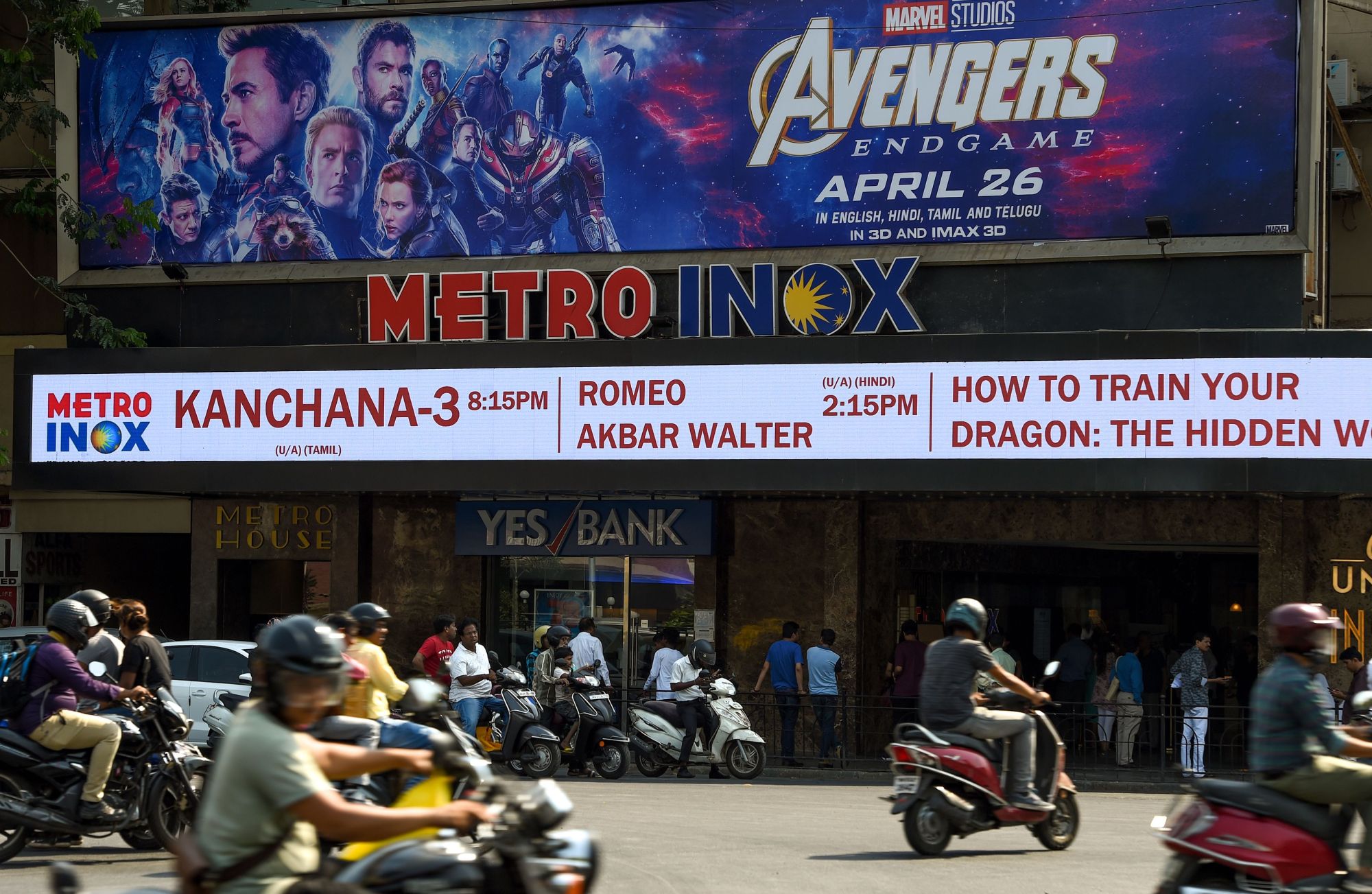
- Industry
Hollywood in India
One in an occasional series exploring the state of Hollywood films in global markets.
The fifth highest-grossing movie ever in the biggest film-producing country in the world is not a Bollywood film. Nor is it a Kollywood or Tollywood film. (Yes, those are things — the Telugu and Tamil-language film industries.) It’s Avengers: Infinity War, and it grossed almost $58 million in 14 days. It’s still playing and the take is north of $66 million now.
That film left the previous Hollywood box office champ in India, 2016’s The Jungle Book at $37 million, in the dust. In 2018, the total box office revenue for Hollywood films in India was $132 million. Of that, $31.6 million was made by Avengers: Infinity War. More recently, The Lion King made $18 million in two weeks with Bollywood superstar Shah Rukh Khan voicing Mufasa
These are astonishing numbers. While 50% of India’s population of 1.3 billion is under the age of 25, and more than 65% is below 35, the youth of India is more likely than not to pirate films and television shows (India has a very tech-savvy young population). With the global connectivity provided by the internet and the more than 850 television channels, they are very plugged into international entertainment. But since the experience of a superhero movie with all the bells and whistles of elaborate stunts and special effects can’t be replicated on a laptop or iPhone, they turned out in droves for these movies, especially since Disney made sure that they were dubbed not only in Hindi but Tamil and Telugu as well by their favorite local movie stars. There are also the bragging rights of watching these films day and date, often before the US release because of the time difference.
Ticket prices have not risen much in the past few years and it still costs between $1 and $4 to see Chris Hemsworth, Robert Downey, Jr., and Scarlett Johansson et al kick Thanos’ behind on the big screen, which doesn’t sound much in American dollars but isn’t cheap enough in rupees to create regular movie-going habits for the vast majority.
Also released in 2018 to big numbers – Jurassic World, Mission Impossible: Fallout, Deadpool 2, Aquaman and Black Panther (the latter shattering conventional wisdom that black stories underperform internationally). Smaller budget movies like Mamma Mia ! and Bohemian Rhapsody were also successful. Aside from action movies, musicals travel well and Freddie Mercury is a native son of India.
Streaming platforms are another way for the Indian movie-going public to keep up with Hollywood movies. Netflix and Amazon Prime add subscribers every day (probably not all paying customers), and the local Hotstar, which is cheaper, is also popular. Both Netflix and Amazon successfully produce Indian content as well. And presales of digital rights to Indian films are routinely snapped up by them. Satellite rights are sold to Hollywood studios. (Sony Pictures and Warner Bros. ventured into local co-productions with Indian films but retired injured as their attempts flopped.)
Now that the decades-long system of stealing stories and waiting to be sued has ended, a new market has emerged – that of selling Hollywood story rights to Indian producers for a percentage. Not that any studio ever actually did sue. The Indian courts are not for faint-of-heart foreign litigants. Expect titles like Infernal Affairs (remade as The Departed by Martin Scorsese), a remake of Warrior and another of The Fault in Our Stars to appear soon.
One unfortunate holdover in the modern era of cinema in India is the still-existing censor board. Despite the ratings certificate of ‘A’ (for Adults) given to John Wick: Chapter 3, the movie had its dialog muted and cut. Crazy Rich Asians was actually released with a blurred crucial scene, and the word ‘bitch’ was edited out. So even though we are past the days of absurdities like cutting a kissing scene right before contact to two nodding flower stalks, some things in the Indian psyche never change, and the mildest sex scene in the world’s most populous country is still considered corrupting, while, just like the rest of the world, violence is A-Okay.
A media and entertainment study put out in March by Ernst & Young India titled ‘A Billion Screens of Opportunity’ reported that India is the growth leader amongst major emerging markets and developing economies, surpassing China in terms of real GDP growth in 2014 and maintaining that level ever since. So the Hollywood focus on India is hardly surprising, and India is a regular stop on international press tours. Unlike China, there isn’t a limit on the number of movies imported, and the untapped market remains huge, as do the opportunities for growth in a country where the literacy levels are rising and the population is younger than most.